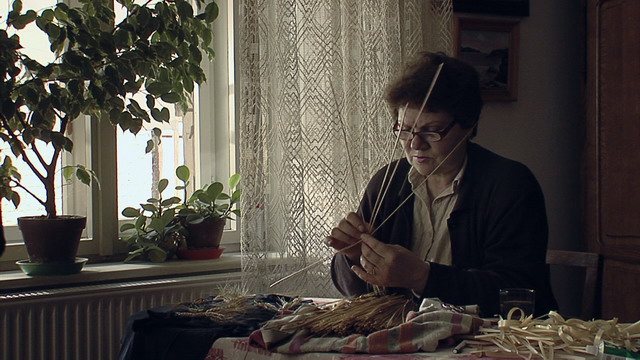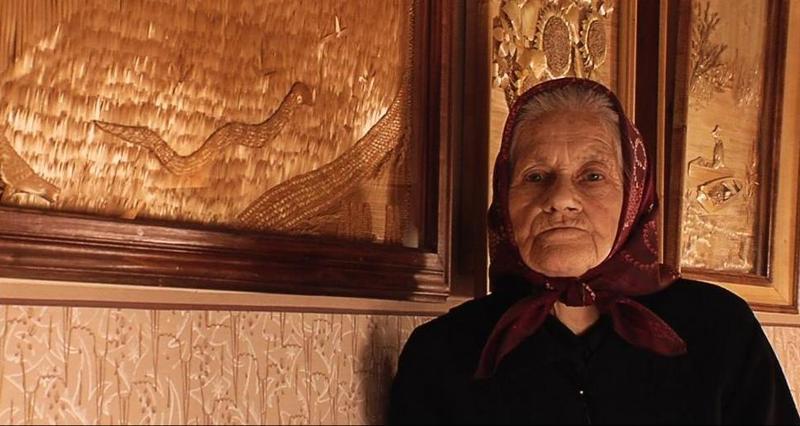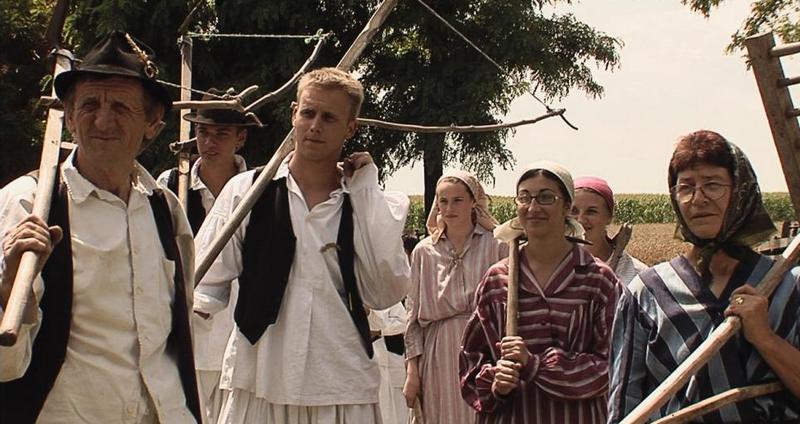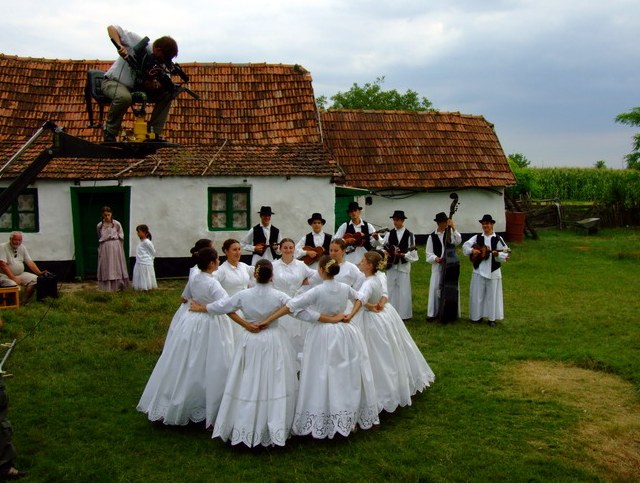
Sponsored Ads
|
» Home
» People » Branko Istvancic Croatian film-maker made a fantastic documentary film about the art of straw-girls in Backa
» Home
» Education » Branko Istvancic Croatian film-maker made a fantastic documentary film about the art of straw-girls in Backa
» Home
» Culture And Arts » Branko Istvancic Croatian film-maker made a fantastic documentary film about the art of straw-girls in Backa
» Home
» Awards » Branko Istvancic Croatian film-maker made a fantastic documentary film about the art of straw-girls in Backa
| Branko Istvancic Croatian film-maker made a fantastic documentary film about the art of straw-girls in Backa |
| By Darko Žubrinić |
Published
06/5/2013
|
People , Education , Culture And Arts , Awards
|
Unrated
|
|
|
|
Branko Ištvančić: From Grain to Painting
Branko Ištvančić on the left and fra Zoran Bibić, a member of the Jury in the Franciscan Convent on Trsat in Rijeka, Croatia
Branko Ištvančić: From Grain to Painting, 2012, documentary, duration 75 minutes
OD ZRNA DO SLIKE
Film o slamarkama i njihovoj umjetnosti koja polako pada u zaborav.
Hrvatske umjetnice u Bačkoj, tzv. "slamarke" slamarske umjetnice, nešto su poput zaboravljena čuda. Pletući slamu na lijep i poetski način opisuju svoj teški usamljenički život na malenom imanju s kućom usred beskrajne, zlatne Panonske ravnice s nekoliko stabala i neizostavnim bunarom (salaš). Vrlo česti motivi malene su katoličke crkve i kršćanski simboli ali i veliki broj motiva iz svakidašnjeg života. Na međunarodnoj izložbi naivne umjetnosti u Moskvi 1976. godine Ana Milodanović osvojila je zlatnu medalju za svoj rad od pletene slame, a Kata Rogić imala je izuzetnu čast darovati svoj rad papi Pavlu VI. u Vatikanu 1964. godine.
|
FROM GRAIN TO PAINTING
Film about straw-girls and their art which is slowly falling to oblivion
Croatian female artists called straw-girls in the region of Bačka are something like forgotten miracle. The name ‘straw-girls’ is derived from Croatian name for straw. They use straw weaving for making beautiful and poetic description of their hard and lonely life at home which is a small oasis with a hut in immense Panonian golden plain with several trees and unavoidable well. Very common motives are small Catholic churches and Christian symbols. At the 1976 international exhibition of naive art in Moscow Ana Milodanovic won the gold medal with her work with straw weaving. Also, Kata Rogic had exceptional honour to present her work to Pope Paul the 6th in Vatican in 1964.
|  Details from the film by Branko Ištvančić
Branko Ištvančić on the right, and Bernardin Modrić, selector of the Film Festival in Rijeka
 A detail from the film "From Grain to Picture" by Branko Ištvančić
Branko Ištvančić
Branko Istvancic was born in Subotica. Graduated film and TV direction in 1999 at Academy of Dramatic Arts in Zagreb capital of Croatia. Making his first, documentary films on 8 mm camera at 15 with his first Hungarian film teacher Zoltan Siflis from Subotica, he has continuously been involved with documentary films and has received Croatian as well as international rewards for his work - The Grand Prix at Croatian Short and Documentary Film Festival, "Oktavijan" award for the best documentary and "Zlatna Uljanica" Golden Oil-lamp award being among them. His student short fiction Saying Goodbye / Rastanak was included in the New Direction programme of The First Film Foundation in London, a selection of six outstanding films by promising European directors.
Deeply enrooted in the Croatian documentary tradition, he pays special attention to the humane, but also humoristic, treatment of his subjects. His successfully film, Wellman / Bunarman (2003), continues this tradition, and elevates the simple story about a well digger to a level of the universal metaphor, but without the pretentious nature of many Croatian documentaries. The critics consider his film The Cormorant Scarecrow / Plasitelj Kormorana (1998) to be one of the best Croatian documentaries of the nineties.
His debut The Ghost in the Swamp was a domestic box-office hit and has been chosen to mark the comeback of feature-length films for children which have not been made by the Croatian film industry for the last twenty years. He is member of Croatian Film Director's Guild.
Source www.istvancic.com
Conctact Branko Ištvančić
| 
'Od zrna do slike' Branka Ištvančića nagrađen na Festivalu hrvatskih vjerskih filmova u Trsatu
U konkurenciji od deset filmova, dugometražni dokumentarni film Branka Ištvančića Od zrna do slike osvojio je Grand prix i nagradu za najboljeg redatelja na Festivalu hrvatskih vjerskih filmova, koji se od 30. svibnja do 1. lipnja održavao u Trsatu.
Žiri kojim je predsjedavala Ljiljana Bunjevac Filipović, TV-redateljica i urednica, a u čijem su sastavu bili i TV-autor Miroslav Mahečić, filmski kritičar Dejan Dabić, trsatski franjevac fra Zoran Bibić i teatrologinja Sanja Nikčević dodijelili su Grand prix filmu Od zrna do slike Branka Ištvančića, za sasvim osobitu i poetičnu priču o „slamarkama“ na sjeveru Vojvodine koja povezuje autonomne vrijednosti naivne umjetnosti s tradicionalnim vrijednostima života čije je osnovno uporište u vjeri, navodi se u pripćenju s festivala. Ištvančić je također proglašen i najboljim redateljem.
U natjecateljskom programu festivala prikazano je deset filmova, a ostale nagrade su sljedeće: za najbolji scenarij nagrađene su Jasminka Domaš i Milka Jauk-Pihak za film Vesdin. Najboljim snimateljima proglašeni su Tvrtko Mršić i Joško Boić za film Poljički pastir u pastvi Gradišća, dok je kao najbolji skladatelj nagrađen Emilijo Kutleša za glazbu više filmova. Nagradu za najbolju montažu osvojio je Nenad Vuković za Vesdin.
4. izdanje Festivala hrvatskih vjerskih filmova održavalo se od 30.svibnja do 1. lipnja u najstarijem hrvatskom marijanskom svetištu Trsat u Rijeci. Festival na jednom mjestu okuplja i izlaže natjecateljskom vrednovanju godišnju produkciju vjerskih filmova snimljenih u Hrvatskoj i njezinoj dijaspori.
|  Branko Ištvančić in action, as well as the girls and tamburica players
From Grain to Painting
Branko Istvancic was born in Subotica. Graduated film and TV direction in 1999 at Academy of Dramatic Arts in Zagreb capital of Croatia. Making his first, documentary films on 8 mm camera at 15 with his first Hungarian film teacher Zoltan Siflis from Subotica, he has continuously been involved with documentary films and has received Croatian as well as international rewards for his work - The Grand Prix at Croatian Short and Documentary Film Festival, "Oktavijan" award for the best documentary and "Zlatna Uljanica" Golden Oil-lamp award being among them. His student short fiction Saying Goodbye / Rastanak was included in the New Direction programme of The First Film Foundation in London, a selection of six outstanding films by promising European directors. Deeply enrooted in the Croatian documentary tradition, he pays special attention to the humane, but also humoristic, treatment of his subjects. His successfully film, Wellman / Bunarman (2003), continues this tradition, and elevates the simple story about a well digger to a level of the universal metaphor, but without the pretentious nature of many Croatian documentaries. The critics consider his film The Cormorant Scarecrow / Plasitelj Kormorana (1998) to be one of the best Croatian documentaries of the nineties. His debut The Ghost in the Swamp was a domestic box-office hit and has been chosen to mark the comeback of feature-length films for children which have not been made by the Croatian film industry for the last twenty years. He is member of Croatian Film Director's Guild.
Documentary From Grain to Painting explores the culture and artistic expression of the Croatian national minority in Vojvodina region. The film focuses on straw-girls, folk artists from Backa, who found their medium of choice in ecological material of straw, using it to create paintings, sculptures and applied art objects. The film depicts the connection between their everyday lives and artistic expression, their specific social and national position. The film protagonists are famous straw-girls Ana Milodanovic and Jozefa Skenderovic, art historian Bela Duranci, priest Andrija Kopilovic and writer Naco Zelic. Through a series of interviews and authentic footage, the film promotes a renaissance of this craft which slowly, but definitely vanishes.
The Croatian minority in Serbia in the last years absolutely experienced the fact that culture depends on politics. From one side, from the aspect of the state, Croats in Vojvodina are good for obligations like paying Serbian taxes or for recruitment in the Serbian army, but not desirable when mentioning it as a new minority after ex Yugoslavia because of special rights. From the other hand, in the Croatian community, the culture strongly reflects the opposition of two sides: the Croatian political elite, and the Catholic Church. Luckily, the concept of culture includes also things like inspiration, creativity, imagination, which can also bring some valuable fruits. It will be document about wonderful Croatian minority as well as people who are ignored and marginalized in Serbia today and forgotten by their Croatian homeland in the other hand.
The aim of this creative documentary film is attempt to make an eternal memory about female straw artisans Croats called "Bunjevci", that have now become a minority nation in Serbia (Vojvodina), whereby, this is not only a tribute to this special art skill but also our way to inspire people to renew this skill and thereby preserve this cultural heritage which is gradually but surely disappearing. Documentary film with its title: "From Grain to Painting" is the story about the straw knitters, straw artisans, which attract attention in their homeland as well as in the rest of the world by making pictures in straw technique. By using these simple, light, and fragile material-straws, these women aim to express their version of great big world around them, and also to embellish their hardworking life build-up from: fields, sun, dust, constantly bended beck's and sweat; the life of black soil that means everything to them. They are portraying their everyday life by always adding their personal poetic touch. They are working with the patience of the filigree, using fragile tawny material and producing unexpected feelings and effects. Female and male haymakers called would be haymaking the infinite, fertile, fields of golden wheat, thereby securing the future for the following period of time. While they were still on fields, they would start entwining grain coronal and other ornaments made of straw, which would than, be brought to the host in his home "salas" after the harvesting is done.
Some girls would start making the straw crowns and rings while still on the field. In the gentle, but sometimes also rough hands of the bread-knitter, the wheat would become handmade ornament. With the ability to shape-up and entwine the thin yellow fibres, those hands would produce various extraordinary handicrafts such as: paintings made of straws, relief's, various landscapes, flowers, functional bowls (dishes), greeting cards and postcards. About the importance and value of this skill testifies the fact that one of the crowns (tiaras) made of straw, was given as a present to Pope Paul the VIth, and is exhibited in the museum in Vatican among other golden tiaras (crowns). Straw production path is not easy: before the harvest artists have to collect the nicest straw stalks, cut, wash, iron and paste them on the background. Every stalk has to be cut by half, watered and ironed. After the lot of work and treatment we get the straw collage, which gets cut into the pieces and than pasted on the background. Piece by piece as the imagination of the creator wants it, a new form sprinkles out - A painting made out of straw.
Writing about Bunjevci slamarke (strawgirls), a famous Tavankut and Croatian historian Ante Sekulic wrote that slamarke (strawgirls) "... have the need to artistically express their experience of the world around them, to make their hard life of fields, sun, dust, constantly bent back, and sweet more beautiful, that life of the black soil that is so crucial for their existence. They paint everyday life, but they always manage to give their experience a poetic touch... The work with straw makes them exceptional. Working with filigree precision... with brittle golden material, they achieve completely surprising atmosphere and effects..." Just like for the Sokci in Slavonia, Baranja, Srijem in Croatia or Backa in Vojvodina, for the Croats minority - Bunjevci in Serbia and Vojvodina everything begins with hard, toilsome work and self-sacrifice and where there is a lot "sweat and tears" there is the beginning of creativity: a rich and diverse traditional culture, indestructible, the peculiar and recognizable croatian dialect called "ikavica", the customs, songs, dance, music, fine arts...
Dužijanca - a working family holiday celebrating the end of the wheat harvest - when the new bread is born, is a recognizable symbol of the Croatian Bunjevci customs. Every house and family of Bunjevci had its own duzijanca in the past, and with it a common gathering, socializing and fun. For weeks the reapers and the women gatherers - risari i risaruse, reaped the seas of yellow wheat - the vast grain bearing fields, ensuring teir future in the upcoming period. At the end of this toilsome work, the skilled women who make wreaths and various straw ornaments, would make wreaths out of wheat ears for the hat of the bandas (the leader of the reapers), and for all the other participants, they would make beads, rings and other jewelry...
Source www.istvancic.com
More information about straw art among Croatians www.matijagubec.org.rs
| Formated for CROWN by Darko Žubrinić
Distributed by www.Croatia.org . This message is intended for Croatian Associations/Institutions and their Friends in Croatia and in the World. The opinions/articles expressed on this list do not reflect personal opinions of the moderator. If the reader of this message is not the intended recipient, please delete or destroy all copies of this communication and please, let us know! |
Related Articles
Related Links
|
|